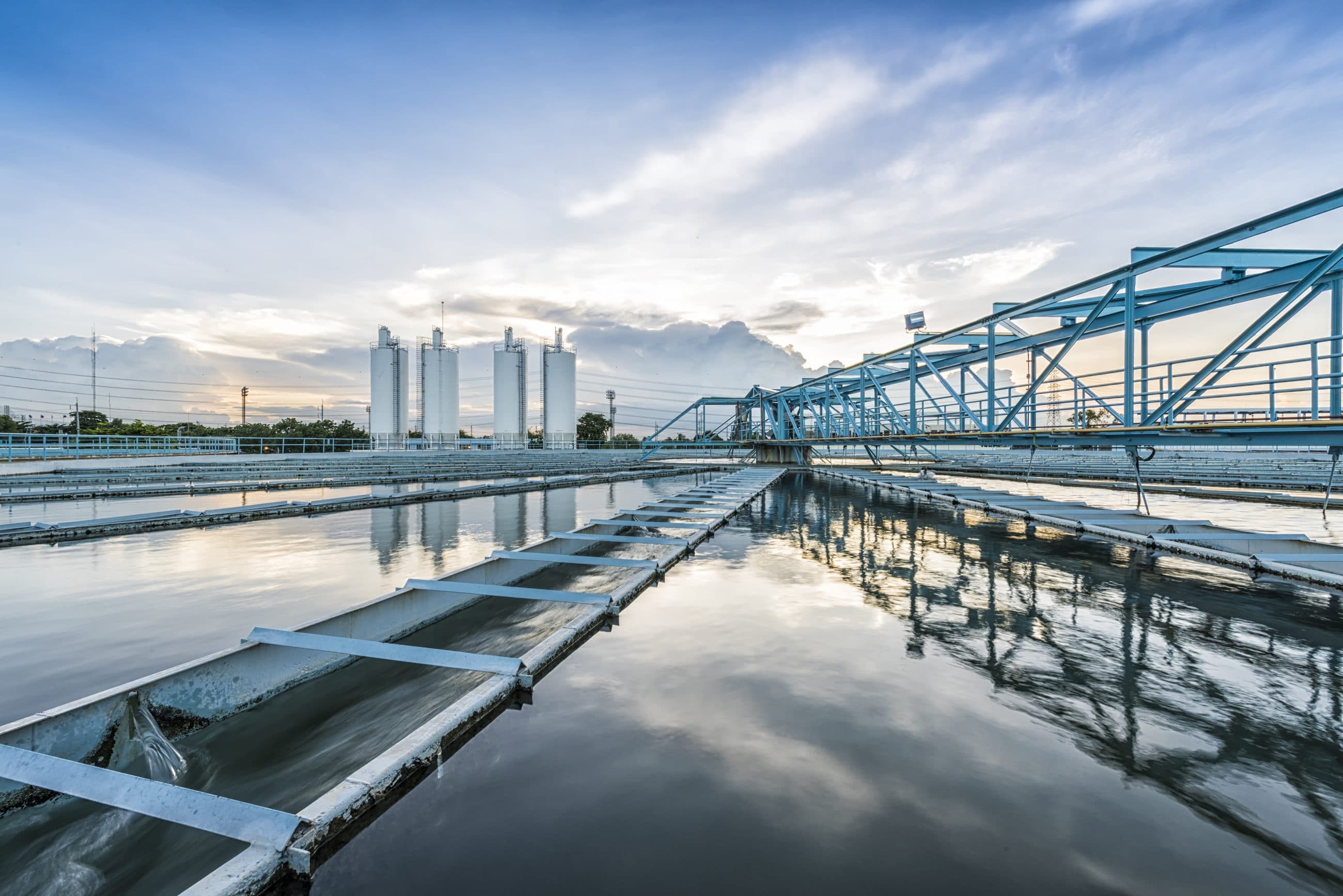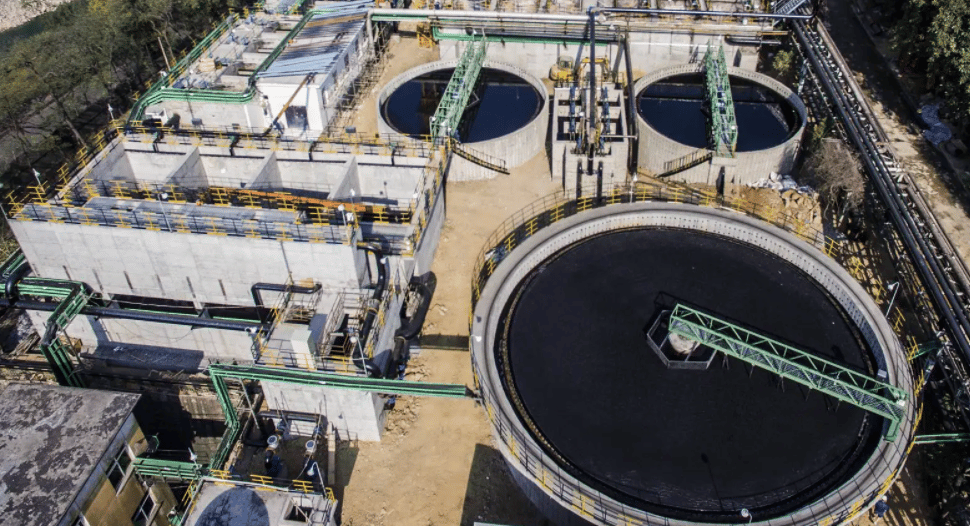Key Methods in Hazardous Waste Water Therapy Processes
The treatment of commercial wastewater is a critical aspect of ecological monitoring, entailing a variety of strategies created to reduce the impact of impurities. Advancements in modern technologies such as membrane filtering and advanced oxidation processes use cutting-edge solutions for boosting treatment effectiveness.
Physical Treatment Approaches
Exactly how efficiently can physical therapy methods resolve the complexities of industrial wastewater? Physical therapy techniques play a crucial function in the initial phases of wastewater administration, focusing largely on the elimination of solids and huge particulates. Techniques such as filtering, flotation protection, and sedimentation are essential for decreasing the concentration of put on hold solids, therefore enhancing the performance of subsequent therapy procedures.
Sedimentation involves the gravitational settling of solids, enabling the separation of larger products from the wastewater. This method is especially reliable in making clear water before biological or chemical therapies. Purification, on the various other hand, utilizes numerous media to capture particle issue, guaranteeing that smaller contaminants are eliminated. This method can be tailored to accommodate different kinds of commercial effluents, producing clearer effluent streams.
Additionally, flotation methods, which make use of air bubbles to raise put on hold solids to the surface for elimination, work in treating wastewater with high focus of fats, oils, and oils. Overall, physical therapy approaches work as an important very first step in the thorough management of commercial wastewater, making sure that the load on succeeding therapy phases is decreased and boosting total therapy effectiveness.
Chemical Treatment Methods
While physical therapy methods prepared for efficient wastewater management, chemical treatment techniques are essential for addressing the more complex impurities commonly located in commercial effluents. These methods make use of different chemical agents to speed up, neutralize, or oxidize unsafe materials, making certain a much more detailed removal of contaminants.
One typical strategy is coagulation and flocculation, where chemical coagulants such as aluminum sulfate or ferric chloride are included in promote the aggregation of put on hold bits. This process improves solid-liquid splitting up, lowering turbidity and enhancing water high quality. Furthermore, neutralization procedures are used to adjust the pH of wastewater, utilizing bases or acids to counteract acidic or alkaline streams, specifically.
Oxidation-reduction responses play an essential duty in derogatory natural impurities and microorganisms. Chemical oxidants like ozone, chlorine, or hydrogen peroxide are utilized to break down intricate natural compounds, making them less unsafe or a lot more eco-friendly. Progressed oxidation procedures (AOPs) incorporate multiple oxidation strategies to improve contaminant removal effectiveness.
Biological Therapy Procedures
The efficiency of wastewater treatment is substantially boosted by organic treatment procedures, which harness the natural metabolic activities of microorganisms to decompose natural issue and eliminate toxins. Industrial Waste Water Treatment. These procedures mainly involve anaerobic and cardio digestion, each tailored for particular sorts of wastewater
Cardiovascular therapy procedures use oxygen to support microbial growth, promoting the break down of organic toxins into co2 and water. Common approaches include triggered sludge systems, where oygenation containers assist in the mixing of wastewater with microbes, and trickling filters, which urge biofilm development on media surfaces.
Conversely, anaerobic treatment procedures happen in the absence of oxygen, utilizing look at this site anaerobic bacteria to break down raw material, leading to biogas production, a renewable resource source. Anaerobic digesters are often used in commercial setups for this objective, successfully reducing the volume of sludge while creating important biogas.
The choice of a biological therapy approach relies on wastewater characteristics, treatment goals, and regulatory criteria. The assimilation of biological procedures in wastewater treatment not only boosts toxin elimination performance yet also promotes sustainability by lessening chemical use and sustaining source healing.
Advanced Oxidation Processes

Common AOP methods consist of Fenton's ozonation, photocatalysis, and reagent. Fenton's reagent, a combination of hydrogen peroxide and ferrous iron, catalyzes the development of hydroxyl radicals, making it efficient for treating wastewater having phenolic substances and other stubborn substances. Ozonation utilizes ozone as a powerful oxidant, efficient in deteriorating a large range of natural pollutants while simultaneously disinfecting the effluent. Photocatalysis employs light-activated drivers, such as titanium dioxide, to enhance oxidation responses and get rid of impurities.
AOPs supply several benefits, including lowered sludge production and the ability to check treat wastewater with high concentrations of natural toxins. The implementation of AOPs requires cautious factor to consider of operational parameters and cost-effectiveness, ensuring that these advanced methods are suitably incorporated right into existing wastewater therapy systems.
Membrane Layer Filtering Technologies

Microfiltration is efficient for eliminating put on hold solids and germs, while ultrafiltration targets smaller sized natural molecules and viruses. Nanofiltration bridges the gap in between ultrafiltration and turn around osmosis, effectively eliminating divalent ions and natural substances. Reverse osmosis offers the greatest level of filtration, made use of click this mostly for desalination and removing mono-valent ions.
Membrane layer innovations provide countless advantages, consisting of low power usage compared to standard therapy methods, modular design for scalability, and the potential for water recovery and reuse. Nonetheless, challenges such as membrane fouling and the need for regular upkeep must be dealt with to make certain system efficacy. On the whole, membrane filtering technologies represent a crucial element of modern industrial wastewater treatment techniques, advertising sustainability and resource conservation in water administration.
Verdict
In final thought, commercial wastewater treatment uses a varied variety of techniques, including physical, chemical, biological, and progressed techniques. Each technique plays an important duty in effectively attending to different pollutants, improving water quality, and promoting source sustainability. The combination of these methods cultivates an extensive therapy strategy, making sure that commercial effluents satisfy governing criteria while reducing ecological influence. Continued developments in these methods will certainly even more boost the effectiveness and effectiveness of wastewater therapy procedures in commercial setups.
The therapy of industrial wastewater is an important facet of environmental monitoring, entailing an array of techniques created to alleviate the impact of contaminants.How properly can physical therapy methods resolve the intricacies of industrial wastewater?Advanced oxidation processes (AOPs) represent an advanced approach in commercial wastewater therapy, developed to successfully degrade natural toxins that are commonly immune to traditional therapy techniques (Industrial Waste Water Treatment).In verdict, commercial wastewater treatment employs a varied selection of methods, including physical, chemical, biological, and advanced techniques. Continued improvements in these methodologies will certainly better boost the effectiveness and efficiency of wastewater therapy procedures in industrial settings